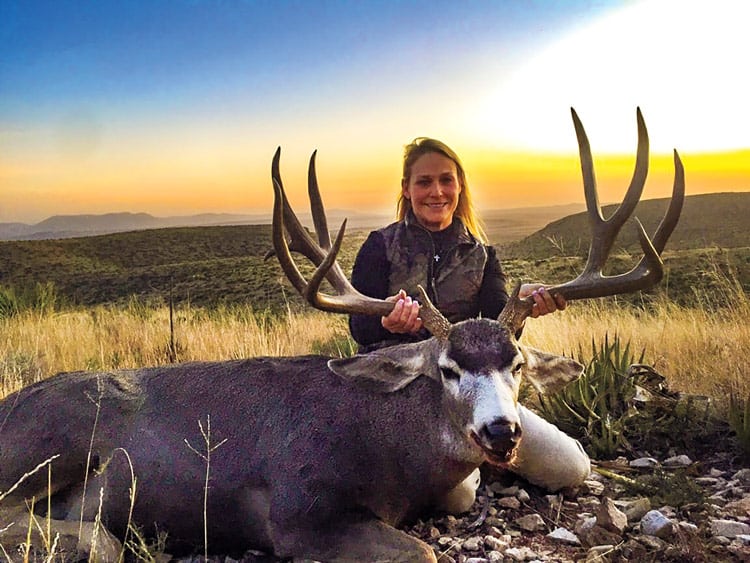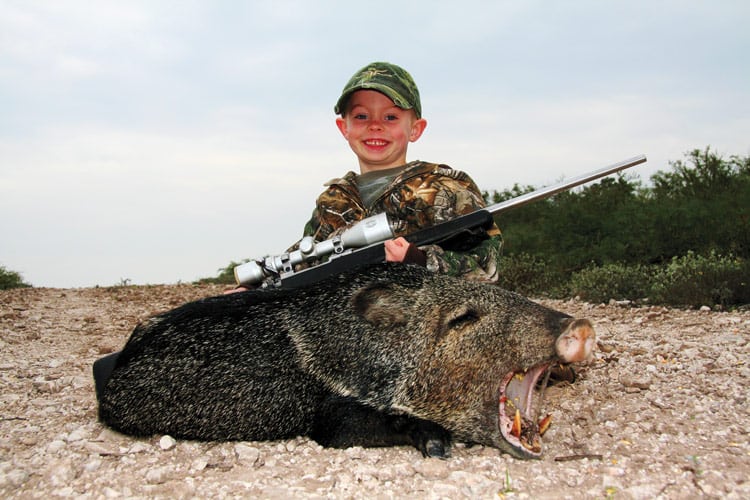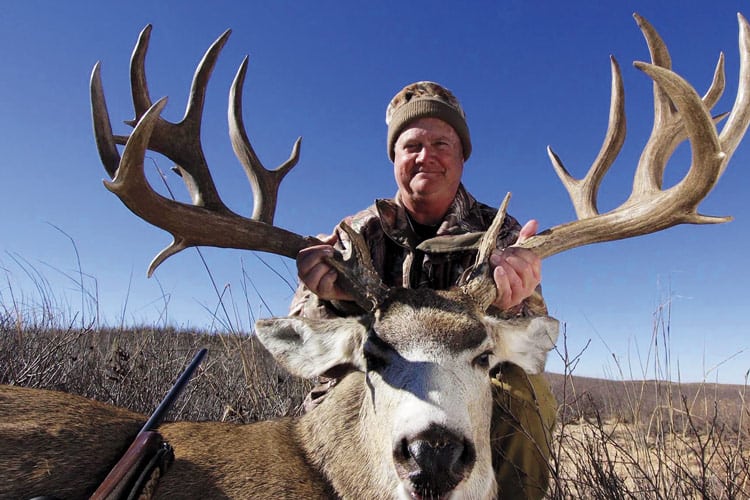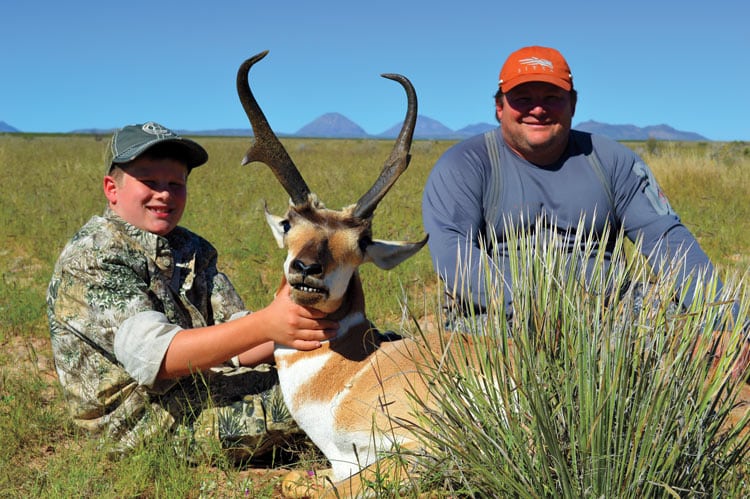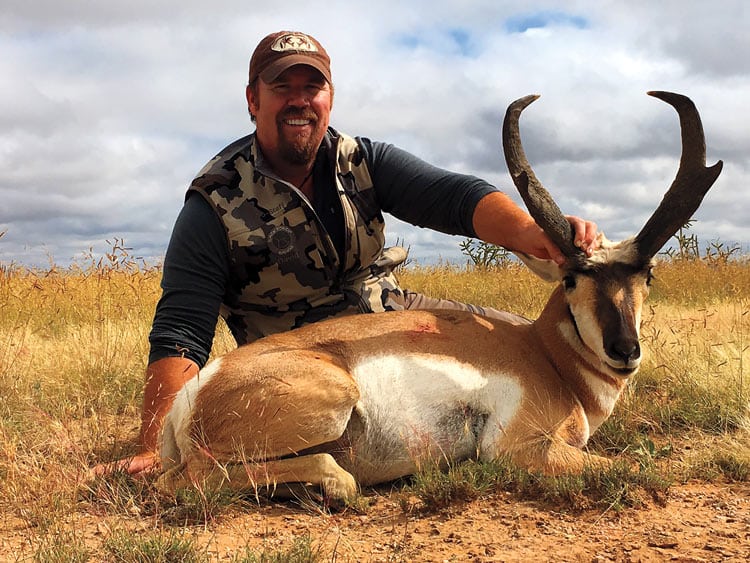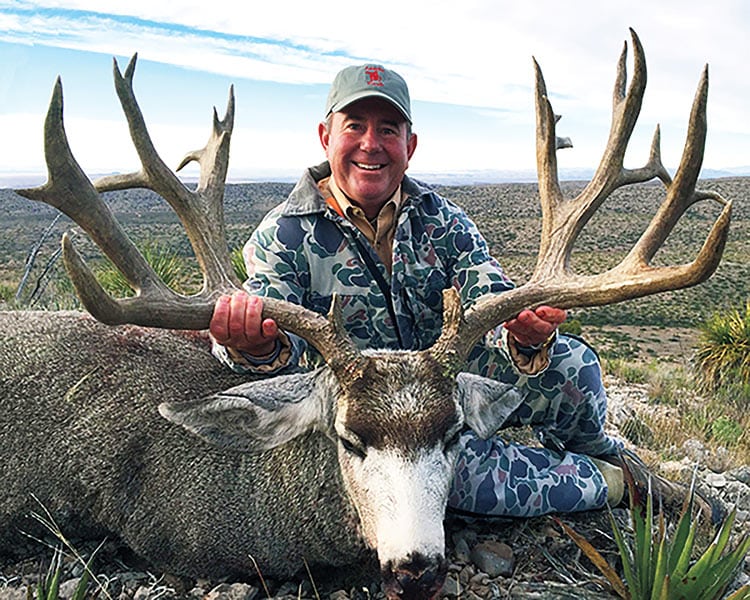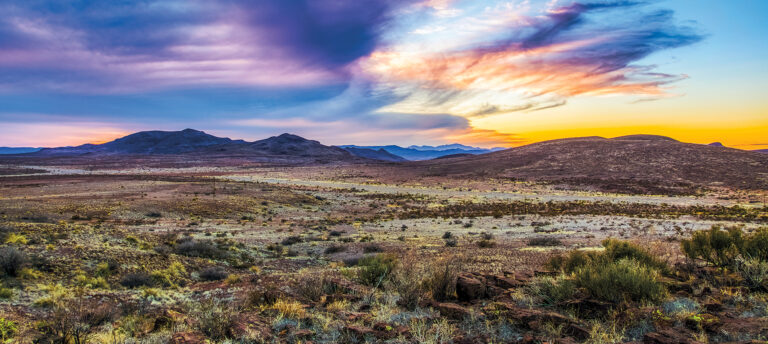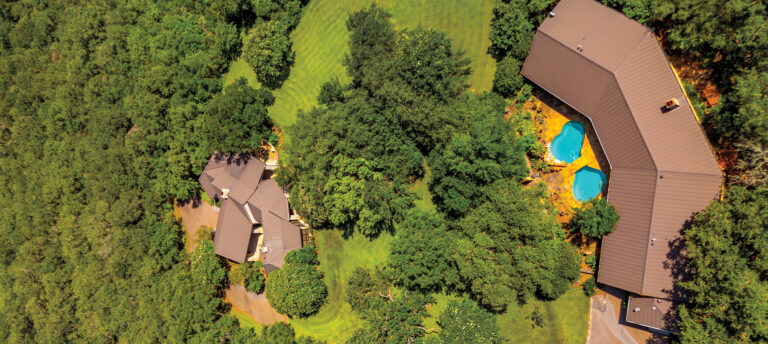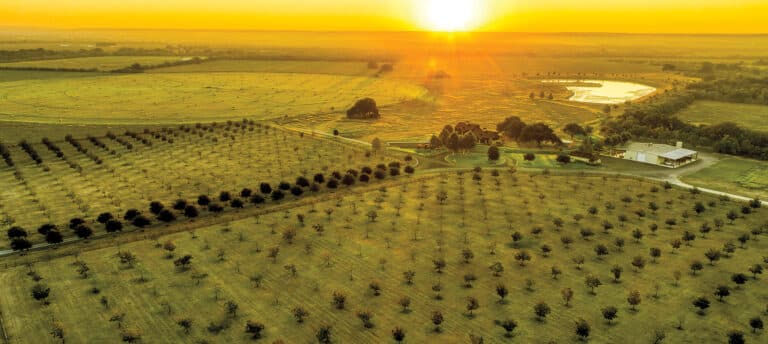Since 1990, the Texas Big Game Awards (TBGA) has set itself apart from “big buck” contests by showcasing the vital relationship between hunting and habitat.
“TBGA is unique because it acknowledges that a quality big game animal is much more than what is hanging on a wall,” said David Brimager, Director of Partner Relations and a Certified Wildlife Biologist® at the Texas Wildlife Association (TWA). “It’s a complete process that begins with a landowner’s decision to do the right things for habitat and ends with a hunter’s well-placed shot. We realize that somewhere along the way that hunter made a conscious decision to embrace our hunting heritage and become a responsible sportsman.”
He continued, “The TBGA is designed to generate awareness among landowners, land managers, hunters and the public that trophy-quality animals are not accidents. They are the results of someone’s planning, hard work and sacrifice.”
In 2017, TBGA’s leadership revisited the program’s objectives.
“TBGA exists to raise awareness about the important role ethical hunting and habitat management play in the lives of young people, and to the ecosystem over which we must be responsible stewards,” Brimager said.
To do that TBGA, which is a partnership between TWA and the Texas Parks and Wildlife Department, recognizes:
- The importance of our hunting heritage;
- The landowners who work to achieve healthy habitats;
- The quality of Big Game Animals in Texas;
- The achievements of young and new hunters;
- The hunters who harvest these animals.
- “Hunting equals habitat,” Brimager said. “High-quality habitat that can produce TBGA qualifiers is a good habitat for all wildlife.”

When TBGA got its start, concerted wildlife management was just becoming a widely established practice in Texas. The statewide awards program offered an opportunity to not only recognize the quality of Texas animals, which was improving because of heightened management efforts, but as a way for wildlife professionals to collect data allowing them to monitor the progress.
Since its inception, TBGA has had more than 36,000 entries including landowners. On average there are about 1,200 entries each year.
“By bringing attention to the positive impacts of hunting, whether they’re ecological or economic, TBGA strengthens our hunting community,” Brimager said. “TBGA encourages ethics, recruits new participants, makes business better for those enterprises connected to hunting, and champions natural resources education. It is a win for hunting, hunters and habitat.”

A Few FAQs about TBGA
TL >What sets the TBGA apart from traditional “big buck” contests?
TWA>First, it’s free. There is no entry fee. Second, hunters enter TBGA after they’ve harvested an animal. Most traditional contests require hunters to register before the season begins in anticipation of the hunt. Third, it’s statewide. Most traditional contests are limited to a county or a region. Fourth, TBGA emphasizes education. We want everyone who attends a TBGA event to leave knowing something they didn’t know when they arrived.
TL >What species does the TBGA recognize?
TWA>White-tailed deer (typical, non-typical/high-fence and low-fence categories); mule deer (typical, non-typical); pronghorn antelope; desert big horn sheep; and javelina.
TL >What is a Texas Slam?
TWA>Hunters can earn a “Texas Slam” award by harvesting a white-tailed deer, a mule deer, a pronghorn antelope, and, as of 2017, a javelina all in the same season with each representative of the each species scoring high enough to qualify for TBGA.
TL >Are there any exclusions from entry?
TWA>Beginning with the 2017–18 season, TBGA no longer accepts “scored entries” from release sites for five (5) years following the last release date. This affects all properties with pen-raised, Trap/Transport/Transplant (TTT) and/or Deer Management Permit (DMP) deer released after March 1, 2017. This doesn’t affect those entering the Youth Division or First Big Game Harvest categories as long as they’ve met all other TBGA requirements.
TL >Who is eligible for TBGA recognition?
TWA>Any licensed hunter in Texas. We have a first-harvest category to honor those people, of any age, who have taken their first animal and entered the community of hunters. We have a youth division for hunters 17 and younger.
Then, we have the scored entry category that is open to all hunters, regardless of age, whose animals meet a minimum scoring requirement.
TL >How does a hunter qualify for TBGA?
TWA>To account for the difference in habitat types across Texas, the TBGA is divided into eight eco-regions: Trans Pecos, Panhandle, Cross Timbers, Edwards Plateau, Post Oak Savannah, Pineywoods, Coastal Prairies and South Texas. Each eco-region has a minimum qualifying score for the species that occur there.
To qualify in the trophy division, a hunter must have his or her entry scored by an official TBGA measurer. There are more than 1,000 trained scorers statewide. To find one, the hunter can access the list at TexasBigGameAwards.org. If the score meets the minimum qualifications for the eco-region where the animal was harvested, the hunter simply fills out an application, available on the website or from the scorer, and mails it to TBGA.
Hunters in the first-harvest and youth divisions don’t have to have their entries scored unless they want to enter them in the scored entry division. First-timers and youth fill out an application and submit it to TBGA.
The deadline for entry each year is March 1. Animals are eligible only during the year they are harvested. For instance, qualifying animals taken during the 2018–19 hunting season will be eligible to be recognized at one of the 2019 Sportsman’s Celebrations.
TL >Describe a typical TBGA Sportsman’s Celebration event.
TWA>Each year we have three regional events: one region includes the Trans Pecos, Panhandle and Cross Timbers eco-regions; the second includes Post Oak Savannah, Coastal Prairie and Pineywoods eco-regions; and the third includes the Hill Country and South Texas eco-regions.
Every regional Sportsman’s Celebration has its own local flair, but the events all include vendors, a big game display, educational seminars for adults and youth, dinner, an awards presentation and an auction featuring items from many nationally recognized outdoor manufacturers. Generally, the crowd is 400–500 people all coming together to celebrate the great outdoors.
TL >How do hunters qualify for the statewide Sportsman’s Celebration?
TWA>The hunters and landowners with the top three entries in each category are invited to attend the statewide Sportsman’s Celebration. It’s held each summer in San Antonio in conjunction with the annual TWA Convention. More than 1,000 people usually attend. It’s a big, fun deal that is an integral part of our family-friendly convention weekend.
TL > Is there anything else that people need to know about TBGA?
TWA>We’ve compiled years of records and scores in the Trophy Search Database on TexasBigGameAwards.org. It allows users to search our database by county, type of animal and hunter’s name.
Finally, Carter’s Country Outdoors, a long-time sponsor, operates a scholarship program in conjunction with TBGA. Each year, the company gives three $1,500 regional scholarships and one $3,000 statewide scholarship to college students majoring in a natural resource field.
TL >Where can people go for more information?
TWA>Our website, TexasBigGameAwards.org is the place to go for information on all things related to TBGA.
TBGA Sponsors TBGA is made possible by the generous sponsorship of:
STATEWIDE
- Hixon Land & Cattle Co.
- Carter’s Country Outdoor Stores
- Shiner Bock
CATEGORY TITLE SPONSORS
- Capital Farm Credit
PROGRAM SPONSORS
- Nikon
- Skull Hooker
- Yeti
- Cyclops Varmint Lights
- ThermaCELL Heated Products
- Leupold
- Bino Dock
- GameGuard Outdoors
- Smith’s
- Walker’s Game Ear
- Stealth Cam
- Kendra Scott Jewelry
- Daisy
- Hoffpauir Auto & Outdoor Stores
- Record Rack Game Feeds
- Western Rivers Game Calls
- American Hunter
- GAMO Precision Air Guns
- Devils River Whiskey
- Desert Eagle Arms
- Kahr Arms
- Silver Stag Knives
- Thompson Arms
- Big & J Feeds

